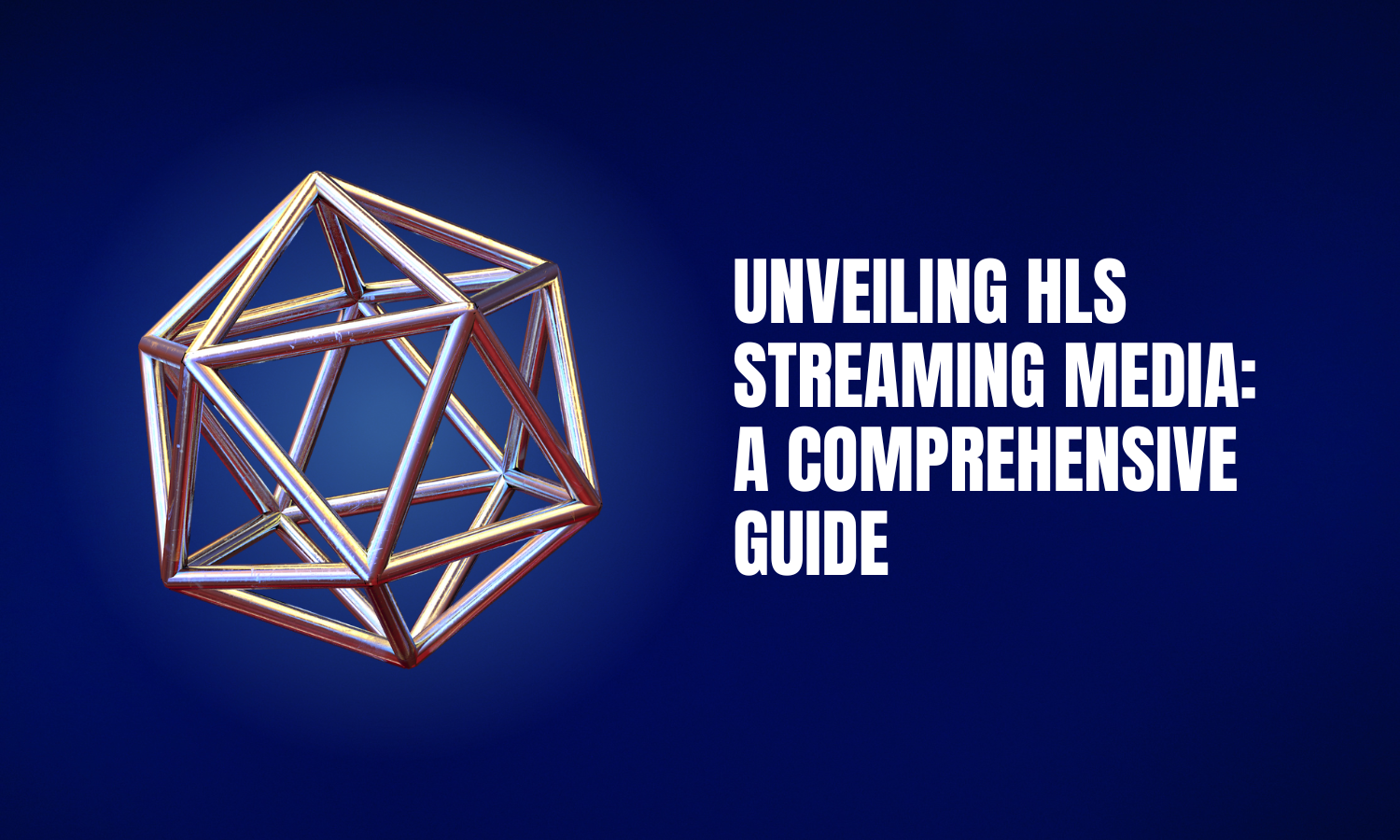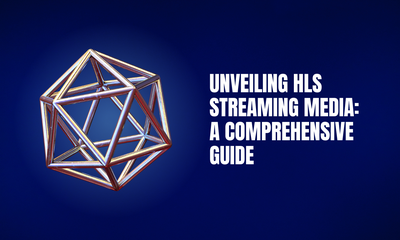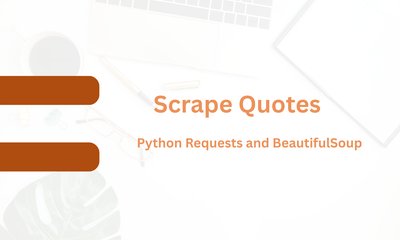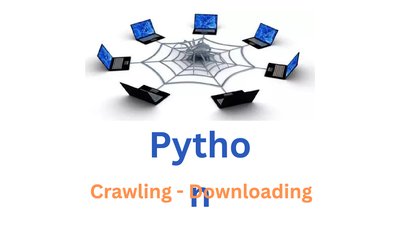HLSストリーミングメディア徹底ガイド
By hientd, at: 2023年12月7日12:44
Estimated Reading Time: __READING_TIME__ minutes


1. 問題
ストリーミングサービスを通じてメディア配信を行う特定のウェブサイトから、オーディオまたはビデオコンテンツを楽しみたいと思うことがあります。ストリーミングはすぐにアクセスできるという利便性がありますが、後でコンテンツを再視聴または保存したい場合、課題となります。サイトに再接続するということは、特にオフラインで視聴または視聴したい場合、コンテンツを再度ストリーミングする必要があることを意味します。
この記事では、HLS - M3U8として知られるストリーミングプロトコルについて詳しく掘り下げ、その仕組みについての洞察を提供し、このメディアコンテンツのダウンロードプロセスをガイドします。お気に入りのメディアにオフラインでアクセスして楽しむ能力を高め、HLSテクノロジーの包括的な理解を提供することを目指しています。
2. HLS(HTTP Live Streaming)のご紹介
HLS、またはHTTP Live Streamingは、メディアストリーミングの状況を一変させた画期的なテクノロジーです。HLSの中核は、マルチメディアコンテンツを一口サイズの管理しやすいセグメントに巧みに分割し、メディアの消費方法を変革することです。このセグメンテーションは、チャンクと呼ばれることが多く、シームレスな配信を可能にし、これらの個々の部分の迅速かつ効率的なダウンロードを可能にします。これらのチャンクは、さまざまなネットワーク速度とデバイスの機能に合わせて巧妙に調整され、アダプティブビットレートストリーミングでユーザーエクスペリエンスを最適化します。
HLSの素晴らしさは、その適応性にあります。これは、ネットワークの状態が変動した場合でも中断のない再生を保証する機能です。視聴者のデバイスの仕様と利用可能な帯域幅に応じて、コンテンツの品質と解像度をリアルタイムで動的に調整します。この汎用性により、高速インターネット接続でも帯域幅が限られたシナリオでも、一貫してスムーズな視聴体験が保証されます。HLSの本質は、コンテンツをより小さくダウンロード可能なコンポーネントに分割する能力だけでなく、各視聴者の特定のニーズに応える固有のインテリジェンスにもあります。
HLSの内部動作を理解するには、シームレスなメディア配信を保証するために調整された一連の手順としてプロセスを想像してください。最初に、メディアコンテンツは個別の部分に分割され、それぞれが全体のビデオまたはオーディオファイルの一部をカプセル化します。マスターマニフェストファイル(M3U8)によって定義されたこれらのセグメントは、基本的に完全なメディアエクスペリエンスを構築する構成要素として機能します。インテリジェントなアルゴリズムを通じて、HLSプレーヤーまたはクライアントは、現在のネットワーク状況とデバイスの容量に基づいてこれらのセグメントを取得し、ユーザーにとって中断のない、調整された視聴体験を保証するために、再生品質を動的に調整します。
3. HLSメディアのダウンロード方法
HLSメディアのダウンロードに関しては、ユーザーが探求できる複数の方法があり、それぞれに独自の利点と制限があります。
-
ブラウザ拡張機能:便利な方法の1つは、Live Stream Downloader(Chromeウェブストアで入手可能)などのブラウザ拡張機能をインストールすることです。このアプローチは、ユーザーフレンドリーなインタラクションを提供し、ブラウザインターフェースを介して直接HLSコンテンツを取得するプロセスを簡素化します。ただし、これらの拡張機能は、機能が制限されていたり、特定のウェブサイトとの互換性がなかったりする可能性があります。
-
FFMPEGの利用:もう1つの強力なオプションは、汎用性の高いマルチメディアフレームワークであるFFMPEGを活用することです。FFMPEGは、ユーザーがインタラクティブにHLSメディアを取得できるコマンドライン機能を提供します。この方法は、ダウンロードプロセスのカスタマイズと制御をより詳細に行うことができます。ただし、コマンドラインインターフェースに精通している必要があり、初心者にとっては学習曲線が急になる可能性があります。
-
Pythonスクリプティング:さらに、スクリプティングに傾倒している愛好家は、Pythonの世界を探求できます。後続のセクションでは、この方法について詳しく説明し、Pythonを利用してHLSメディアを効率的にダウンロードするプロセスを明らかにします。Pythonは柔軟性と、特定の要件に合わせて調整されたカスタムスクリプトを作成する能力を提供します。それにもかかわらず、Pythonプログラミングの熟練度が必要になる可能性があり、スクリプティング言語に慣れているユーザーに最適です。
それぞれのアプローチには、独自の利点と考慮事項があり、さまざまな好みと技術的能力に対応しています。これらの多様な方法を探求することで、ユーザーは、さまざまなツールやプログラミング言語に対する快適さと familiarity に応じて、HLSメディアコンテンツを簡単に取得できる可能性が開かれます。
4. Pythonを使用したHLSメディアのダウンロード
ステップ1:必要なライブラリのインストール
必要なPythonライブラリがインストールされていることを確認してください。HTTPリクエストにはrequestsライブラリ、マルチメディア処理にはffmpeg-python、暗号化(必要な場合)にはcryptography、M3U8ファイルの解析にはm3u8が必要です。
pipを使用してライブラリをインストールします。
pip install requests ffmpeg-python cryptography m3u8 ステップ2:M3U8ファイルの取得
requestsを使用して、HLSソースからM3U8ファイル(マスタープレイリスト)を取得します。
import requests url = "URL_TO_MASTER_PLAYLIST.m3u8" # マスタープレイリストの実際のURLに置き換えます
response = requests.get(streaming_url)
if response.status_code == 200:
m3u8_content = response.text
else:
print("M3U8ファイルの取得に失敗しました")ステップ3:セグメントURLの解析と抽出
m3u8パッケージを使用してM3U8コンテンツを解析し、セグメントURLを抽出します。
from m3u8 import M3U8 parser = M3U8()
parser.read(m3u8_content)
segment_urls = parser.segments.uriステップ4:セグメントコンテンツの復号化(オプション)
M3U8ファイルから抽出された暗号化情報に基づいて、復号化ロジックを実装します。
# 暗号化情報がある場合はセグメントを復号化します
# このステップには、暗号化キーの処理とセグメントの復号化が含まれます(具体的な実装は異なります)
# 例:
# key = ... # M3U8ファイルからキーを抽出します
# iv = ... # M3U8ファイルからIV(初期化ベクトル)を抽出します# cipher = Cipher(algorithms.AES(key), modes.CBC(iv), backend=default_backend())# decryptor = cipher.decryptor()# decrypted_segment = decryptor.update(encrypted_segment) + decryptor.finalize()ステップ5:HLSセグメントのダウンロード
抽出されたセグメントURLを使用してHLSセグメントをダウンロードします。
# セグメントURLを反復処理し、各セグメントをダウンロードします
for segment_url in segment_urls:
segment_response = requests.get(segment_url)
if segment_response.status_code == 200:
# セグメントをローカルに保存します(ファイルの名前付けとストレージは必要に応じて調整します)
with open("segment_file.ts", "wb") as segment_file:
segment_file.write(segment_response.content)
else:
print(f"セグメントのダウンロードに失敗しました:{segment_url}") ステップ6:セグメントのマージ(オプション)
FFMPEGを使用してダウンロードしたセグメントをマージして、単一のビデオまたはオーディオファイルを作成します。
import subprocess
# FFMPEGを使用したセグメントのマージの例
subprocess.call('ffmpeg -i "concat:segment1.ts|segment2.ts" -c copy output.mp4', shell=True) ステップ7:エラー処理とカスタマイズ
ダウンロード失敗のエラー処理を確保し、ファイルの命名規則をカスタマイズし、HLS構造、暗号化方法、サーバーの要件に基づいてスクリプトを調整します。
このガイドは、M3U8ファイルの解析、m3u8パッケージを使用したセグメントURLの抽出、セグメントのダウンロード、オプションでFFMPEGを使用したマージを網羅した、Pythonを使用したHLSメディアのダウンロードの概要を示しています。
完全なソースコード:
このリンクを確認してください
5. まとめ
結論として、HLSストリーミングは変革的なテクノロジーであり、メディア消費の世界に比類のないメリットを提供します。その適応性により、ネットワークの状態やデバイスの機能に基づいて品質と解像度を簡単に調整し、シームレスな視聴体験が保証されます。その汎用性と堅牢なライブラリを備えたPythonは、このアクセシビリティをさらに強化し、ユーザーがHLSコンテンツを簡単に利用できるようにします。Pythonの機能を通じて、ユーザーはHLSストリーミングの力を利用し、比類のない容易さでメディアコンテンツにアクセスできるようになります。
6. 参考文献
-
HLSストリーミングリソース:
-
Pythonライブラリとチュートリアル:
-
ストリーミングとメディアテクノロジー:
-
Pythonとマルチメディア処理:
これらのリソースは、HLSストリーミング、マルチメディア処理のためのPythonライブラリ、ストリーミングメディアテクノロジーのさまざまな側面に関する詳細な情報、チュートリアル、ドキュメント、およびアップデートを提供します。これらは、さらなる探求と学習のための貴重なリファレンスとして機能します。





